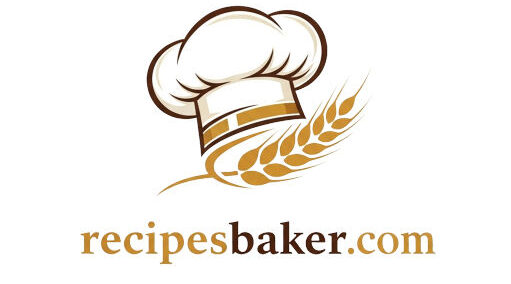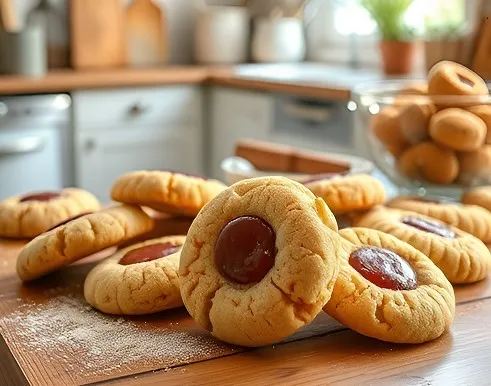Buckle up, cookie lovers—today we’re diving into the wonderfully indulgent world of batter cookies. If you’re looking to whip up a batch of irresistible treats without the fuss of rolling out dough or fussy cutters, then batter cookies might just be your next kitchen obsession. In this guide, we’ll explore everything from what makes a batter cookie a delightful twist on traditional cookies to creative variations that let your baking personality shine. Whether you’re a seasoned baker or a curious beginner, get ready for a journey packed with practical tips, flavor innovations, and troubleshooting tricks to ensure every bite is perfection.
Table of Contents
What Are Batter Cookies? A Delicious Introduction
The Concept Behind Batter Cookies
At its core, a batter cookie is simply a cookie made from a liquid or pourable batter rather than a stiff, rollable dough. Think of them as the lovely intersection between cake-like treats and classic cookies. Their batter is reminiscent of a muffin or cake mix, lending itself to a soft, occasionally cakey texture that melts in your mouth. This style of cookie is a welcome alternative when you’re craving something sweet but want to skip the laborious steps of dough preparation.
Differentiating Batter Cookies from Traditional Dough Cookies
The big difference is all about texture and technique. Traditional dough cookies typically require you to form and shape the dough—using rollers, cookie cutters, or simply your hands—to achieve that desired look. Batter cookies, on the other hand, have a relaxed, spoonable consistency. You drop or pour them onto a baking sheet, and that’s it! This minimal fuss approach means fewer steps and less cleanup, making batter cookies a godsend when time is short or inspiration strikes on a lazy afternoon. Imagine the difference between constructing a detailed sandcastle and simply pouring a playful mud pie; both are fun, but one definitely makes life easier.
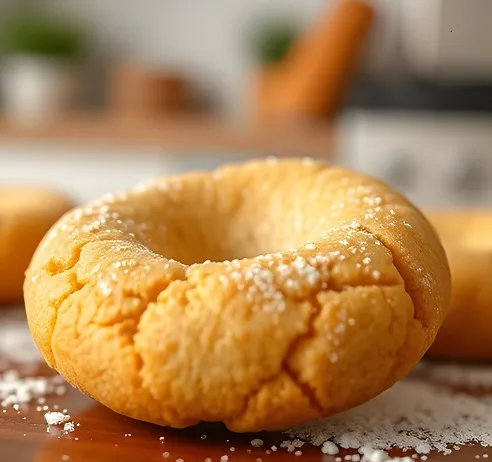
Why Batter Cookies Are a Great Baking Choice
When you need a quick win in the kitchen, batter cookies are the way to go. They boast an incredibly straightforward process that eliminates the need for chilling time, rolling out dough, or complicated shaping. Their simplicity makes them perfect for busy households, beginners in the kitchen, or even for baking projects with the kids. Plus, their versatility means you can experiment endlessly with flavors and textures. Whether you’re in the mood for something chewy, soft, or even a little cakey, batter cookies can be easily adjusted to match your personal taste. In short, these cookies cater to every type of sweet tooth, making them a must-try for any baking enthusiast.
Exploring the Versatility of Batter Cookies
A Spectrum of Batter Cookie Creations
Batter cookies aren’t just one cookie—there’s a delightful array of variations to explore. Let’s break down some of the most popular styles that showcase just how adaptable these treats can be.
The Simplicity of Drop Cookies
Drop cookies are often considered the poster child of the batter cookie family. These treats involve spooning dollops of batter directly onto your baking sheet, leaving you with charming, slightly irregularly shaped cookies. Their beauty lies in their effortless preparation—you don’t have to worry about precise measurements or shaping molds. Whether you’re aiming for lightly golden edges or even a more underbaked, gooey center, drop cookies let you embrace a bit of unpredictability in every batch. They’re the perfect solution when you want a quick snack that still carries a gourmet appeal.
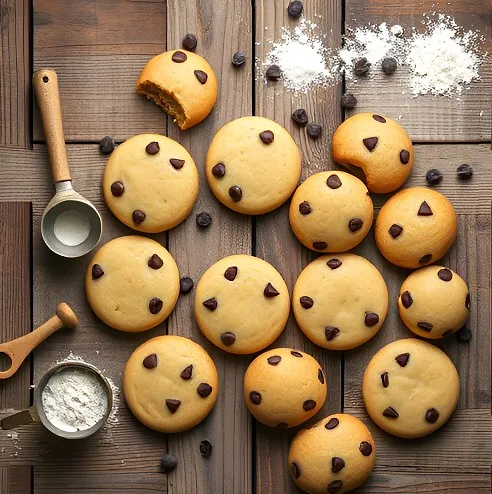
The Charm of Bar Cookies
If you prefer a more communal treat that cuts easily into squares, bar cookies are your answer. With bar cookies, you spread your batter into a well-greased pan and bake it as a single slab. Once out of the oven, simply slice it into bars for a shareable, yet satisfying dessert. This method is especially handy when hosting gatherings or when you want to prep dozens of cookies in one go—no need to individually portion out each cookie. Plus, the process eliminates the common anxieties that come with trying to perfectly shape each cookie, making bar cookies both practical and delicious.
Sheet Pan Cookies: The Party-Perfect Option
For those special occasions or movie nights when you need to serve a crowd, sheet pan cookies are a lifesaver. These oversized versions involve spreading a thin, even layer of batter on an entire baking sheet. When baked, the sheet becomes a giant cookie that you can break up into rustic, easy-to-share pieces. The result is a visually impressive and mouthwatering treat that invites friends and family to dig in right away. Whether you’re planning a casual get-together or a holiday cookie swap, sheet pan cookies deliver convenience without compromising on flavor.
Varying Textures: Chewy Versus Cakey
One of the most exciting aspects of baking batter cookies is that you can tailor their texture to your liking. Some recipes lean toward a chewy consistency—often achieved by using more brown sugar or incorporating a bit of oats—while others embrace a slightly cakey interior due to a higher leavening agent or increased fat content. This flexibility means you can experiment until you stumble upon your ideal cookie texture. So, whether you prefer a soft, chewy bite or a tender, cake-like experience, the world of batter cookies welcomes you to experiment until perfection is achieved.
Essential Ingredients for Perfect Batter Cookies
Flour: The Backbone of Your Batter
No great cookie is complete without a solid base, and flour lays that foundation. In batter cookies, flour provides structure and contributes significantly to the final texture. While all-purpose flour is the go-to choice for many bakers, don’t be afraid to experiment with alternatives. Cake flour, for example, can impart an extra-soft quality, while bread flour might lend a slightly chewier bite. For a nuttier, denser treat, whole wheat flour can be a fun addition. The type of flour you choose can fine-tune your cookie’s overall personality—so play around until you find your perfect match.
Sugars: More Than Just Sweetness
Sugar plays a dual role in batter cookies—it sweetens and impacts texture. White sugar tends to create a crispier edge, ideal if you’re after that slight crunch, whereas brown sugar introduces moisture and chewiness, resulting in a softer bite. Additionally, natural sweeteners like honey or maple syrup offer unique flavor profiles and can be used to experiment with new tastes. Just remember, if you swap out one for another, you might need to adjust the liquid balance in your recipe. Balancing sweetness and moisture is key to ensuring every cookie is as delightful as it is delicious.
Fats: Butter, Oil, and Their Magic Touch
The type of fat used in your recipe can profoundly affect the flavor and texture of your batter cookies. Butter brings a rich, creamy flavor and often contributes to a pleasing chew. Alternatively, oil can yield a more tender, melt-in-your-mouth cookie with a softer crumb. Some recipes even call for shortening to achieve a specific texture. Think of fat as the secret ingredient that elevates your batter cookies from good to unforgettable—the right choice can add layers of flavor, richness, and an inviting mouthfeel.
Leavening Agents: Lifting Your Batter to New Heights
A proper rise is essential in batter cookies, and that’s where leavening agents come into play. Baking soda and baking powder are the stars of this chemical wizardry. Baking soda generally encourages a flatter, chewier cookie, while baking powder can help the cookie puff up for a more cakey texture. Some recipes cleverly combine both to achieve a balanced rise. Understanding the role each plays can help you tweak your recipe to attain the perfect cookie height and texture every time.
Eggs and Their Alternatives: Binding and Moisture
Eggs not only act as a binding agent in your batter but also contribute to the overall structure and moisture of the cookie. If dietary restrictions or preferences keep you from using eggs, there are plenty of alternatives available—think flax eggs or even applesauce. These substitutes will add moisture and help bind your ingredients without compromising the final product, making your cookies accessible to a wider audience.
Flavor Enhancers: Extracts, Spices, and More
This is where you get to let your creativity flourish! Classic vanilla extract is a reliable champion, but why stop there? Experiment with almond extract, add a dash of cinnamon, or even throw in some nutmeg and ginger for that extra warmth. Additional mix-ins like chocolate chips, nuts, and dried fruits can completely transform your batter cookies into a treat that’s truly your own. Whether you’re dreaming up a bold new flavor or paying homage to a timeless treat, the possibilities are endless.
Step-by-Step Guide: Crafting Your Perfect Batter Cookies
Getting Organized: Equipment and Ingredients
Before you even preheat your oven, it’s all about preparation. Lay out all your tools—a set of mixing bowls, measuring cups and spoons, baking sheets (lined with parchment for easy cleanup), and an oven that’s been preheated to the right temperature. Having everything ready isn’t just practical; it adds to the overall enjoyment of the baking process. Think of it as assembling the perfect playlist before starting your favorite workout—it just sets the tone for success.
Mixing: The Art of Balancing Wet and Dry Ingredients
The key to perfect batter cookies lies in the balance of your ingredients. Begin by mixing all your wet ingredients in one bowl—this typically includes eggs, melted butter or oil, and any extracts you’re using. Separately, combine your dry ingredients: flour, sugars, baking soda or powder, and salt. Once the two mixtures are ready, gently fold them together in small increments until just combined. The goal? Avoid overmixing because that can lead to tough cookies. It’s more about blending than beating—a relaxed approach ensures soft, tender treats.
Pouring and Shaping: How to Achieve the Right Consistency
Your cookie batter should have a smooth, evenly flowing texture. If the batter is too thick, consider adding a splash of milk or water bit by bit. On the flip side, if it’s too runny, a touch of extra flour can help you get back on track. Whether you’re making drop cookies by spooning dollops onto your baking sheet or preparing bar cookies by spreading the mixture evenly in a pan, consistency is everything. Keeping an eye on the texture will ensure that your cookies bake uniformly and come out with that ideal balance between soft and structured.
Baking and Monitoring: Timing Is Everything
Every oven behaves a little differently, so be sure to watch your cookies closely towards the end of the baking time. The ideal moment is when the edges are turning a subtle golden hue while the center still promises a soft, tender crumb. For best results, remove the cookies from the oven just before they look completely set—the residual heat will finish the baking process. This approach not only prevents overbaking but also maintains that irresistible, gooey quality that makes batter cookies so much fun.
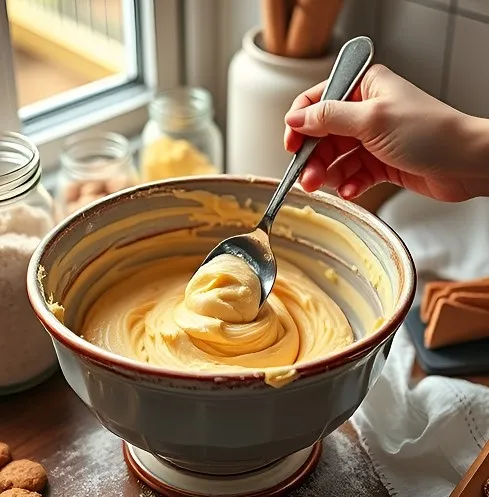
Creative Twists: Elevating Your Batter Cookies with Flavorful Add-ins
Experimenting with Chocolate
No conversation about batter cookies is complete without mentioning their endless compatibility with chocolate. Whether you prefer generous chocolate chips, chunky morsels, or even elegant swirls of melted chocolate, adding chocolate is a sure way to boost the flavor profile. Experiment with milk chocolate for a creamy indulgence or dark chocolate for a slightly bitter edge that complements the sweetness. You might even combine different types for a layered taste that evolves with every bite. The chocolate potential is limitless in the world of batter cookies!
Adding Nuts, Seeds, and More Crunch
For those who love a bit of crunch in their cookie, consider mixing in chopped walnuts, pecans, or almonds. Toasting the nuts lightly before folding them into the batter unlocks intense, nutty aromas that elevate the overall flavor. If you’re a fan of seeds, a sprinkling of sesame or poppy seeds can add an unexpected yet delightful texture contrast. These simple additions not only boost flavor but also bring a satisfying crunch to every cookie bite.
Incorporating Fruits, Zest, and Spices
Dried fruits like raisins, cranberries, or chopped apricots lend a burst of tangy sweetness that pairs delightfully with the soft texture of batter cookies. You might also experiment with fresh citrus zest—lemon or orange zest can really brighten up the flavor. In addition, warming spices like cinnamon, nutmeg, or even a hint of clove can transform your cookies into an autumn-inspired treat. With such a diverse palette of add-ins, you’re limited only by your imagination. Feeling adventurous? You might even mix in a spoonful of peanut butter or a dusting of sea salt for that irresistible sweet-salty dynamic.
Out-of-the-Box Inspirations
Some bakers even draw inspiration from savory treats—ever think about infusing a hint of BBQ spice into your batter? It might sound unconventional, but a dash of smokiness can create a flavor profile that is unexpectedly delightful. Imagine savoring a cookie that channels the spirit of a well-crafted flatbread, with just enough smoke to intrigue the palate without overpowering the sweetness. Let your creativity run wild; sometimes, the most memorable recipes come from playful experimentation in the kitchen.
Troubleshooting: Fixing Common Batter Cookie Hiccups
Cookies That Spread Too Much
There’s nothing worse than waiting for your cookies to emerge from the oven only to find they’ve turned into thin, fragile discs. Over-spreading is often a sign that either the butter is too liquid or that the batter hasn’t been chilled enough before baking. To combat this, make sure your butter is softened rather than melted completely, and consider chilling the batter for about 30 minutes to help it set during baking. Even a light dusting of extra flour can sometimes save the day if your cookies just won’t hold their shape.
Addressing Dry Cookies
Dry cookies usually point to one of two issues: too much flour or a touch of overbaking. Measuring ingredients precisely is crucial. Using more brown sugar can help maintain moisture, and remember that cookies often continue to set after coming out of the oven. When in doubt, remove them a little early and allow the residual heat to work its magic on the way home.
Avoiding an Overly Cakey Texture
Sometimes the light, cake-like quality you’re aiming for might turn into an overly cakey cookie if too much baking powder is used or if the batter is overmixed. Reducing the leavening agent slightly or easing up on the mixing can help achieve that perfect balance. The goal is a cookie that melts in your mouth rather than one that resembles a cake—unless that’s exactly what you’re going for!
Underbaked Versus Overbaked: Finding the Balance
Striking the right balance in baking time is both an art and a science. Underbaked batter cookies risk being too soft and falling apart, while overbaked ones lose their tender charm and become unnecessarily crunchy. Investing in an oven thermometer and watching your cookies closely during the final minutes can save you from these pitfalls. Adjusting the baking rack position may also help achieve more even cooking. Every oven is unique, so these small tweaks can make a big difference in your cookie outcome.
Storing Your Batter Cookie Masterpieces
Cooling with Care
Once your cookies are out of the oven, the journey isn’t over yet. Allowing them to cool properly is critical to setting their structure and flavor. Let your creation rest on the baking sheet for a few minutes before transferring it to a cooling rack. This brief pause lets the cookies firm up just enough to avoid breakage while still retaining that soft, inviting center.
Room Temperature Storage Tips
After your cookies have fully cooled, the best way to preserve their delightful texture is to stash them in an airtight container at room temperature. If you’d like them to stay soft and fresh for longer, consider placing a slice of bread in the container along with the cookies. The bread helps maintain moisture, ensuring that each cookie remains just as enjoyable as when it came out of the oven. Typically, these cookies will keep their charm for about three to four days.
Freezing for Long-Term Enjoyment
If you find yourself with an overabundance of batter cookies—or if you simply want to enjoy them over an extended period—freezing is a fantastic option. Place the completely cooled cookies in a freezer-safe container or bag, and they’ll keep for a couple of months. When you’re ready to indulge, simply let them thaw at room temperature. The cookies will retain their flavor and texture, promising that same fresh-from-the-oven experience even after time has passed.
Final Thoughts: Your Creative Journey With Batter Cookies
There’s something wonderfully liberating about the simplicity and versatility of batter cookies. From their effortless preparation to the endless opportunities for flavor experimentation, they embody the spirit of creative, joyful baking. Whether you’re planning a cozy night in, a weekend baking session with family, or simply looking for a quick treat to whip up on a busy day, these cookies provide a reliable—and utterly delicious—solution.
Remember, the fun of baking isn’t always in perfection; it’s in the process of experimentation and enjoying each delicious mishap along the way. Take the guidelines shared here as a launching pad to create your own signature version of the batter cookie. Mix and match ingredients, try out innovative techniques, and most importantly, savor every bite.
As you embark on this baking adventure, keep in mind that every cookie batch is an opportunity to refine your skills, learn from small challenges, and celebrate your successes—even if that means enjoying a cookie that’s a little wonky but bursting with flavor. So grab your mixing bowl, set your oven to the perfect temperature, and let your creativity shine. Happy baking!
Happy cookie crafting, and may your kitchen always be filled with the sweet aromas of freshly baked batter cookies.
